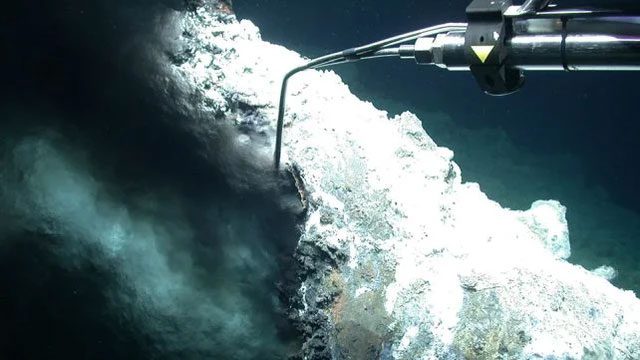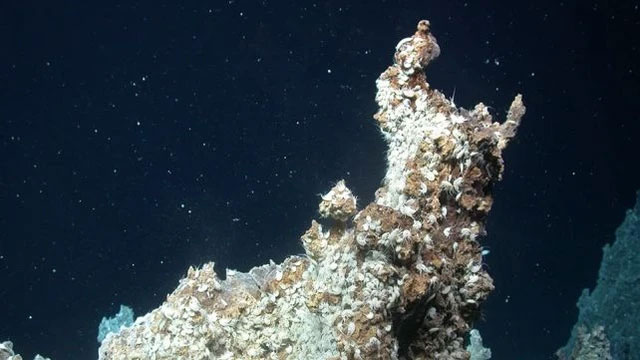The Strange World at the Arctic Circle May Be What Humanity Hopes to Find on Other Planets.
Off the coast of Norway’s Svalbard archipelago—a region within the Arctic Circle—and 3,000 meters deep beneath the sea, a “field” of hydrothermal vents opens along the Knipovich Ridge, a 500 km long underwater mountain range that was previously considered quite ordinary.

A hydrothermal vent in Jøtul Field, beneath the Arctic Circle, is releasing material that looks like black smoke—actually full of essential minerals for life—into the seawater. (Photo: UNIVERSITY OF BREMEN).
According to Science Alert, the first clues about this mysterious world emerged in 2022, showing signs of hydrothermal chemical reactions in the area.
A remotely operated submarine MARUM-QUEST was sent down to depths of over 3 km, where it captured images and collected water samples.
There, they discovered Jøtul Field – a vast area on the seabed filled with both inactive and active hydrothermal vents, as well as the characteristic shimmering light of volcanic heat permeating the water.
Jøtul Field is situated right on the boundary between two tectonic plates of the Earth. These plates move very slowly apart, causing the crust to stretch, leading to the development of valleys and mountain ranges.

Crustaceans cover an area with hydrothermal vents. (Photo: UNIVERSITY OF BREMEN).
Writing in the scientific journal Scientific Reports, the authors stated that the Jøtul hydrothermal field is the first discovered along the Knipovich Ridge, expanding very slowly and holding significant importance as it represents a new link between nearby known hydrothermal environments.
Co-author Gerhard Bohrmann, a marine geologist from the University of Bremen (Germany), explained that the hydrothermal system is where seawater seeps into the magma-filled ocean floor below, is heated, and then erupts back to the seabed through cracks and fissures.
“On its way up, the fluid becomes rich in minerals and dissolved materials from the oceanic crust, leaking back at the seabed through tubular structures,” Dr. Bohrmann said.
At this depth, conditions are perpetually dark, frigid, and surrounded by immense pressure.
Yet, the hydrothermal system, stretching 1 km long and over 200 m wide, has transformed the area into a fertile, warm, mineral-rich field where countless organisms can attach and thrive peacefully on the seabed.
Described as a “fairyland,” Jøtul Field not only promises to reveal a novel ecosystem in the frigid Arctic Circle but also holds substantial significance in many other fields.
For instance, paleobiologists believe that the hydrothermal system could be where life originated in the ancient oceans billions of years ago, as the pressure, temperature, and chemical richness here are thought to enable reactions that give rise to life.
Studying hydrothermal systems is also an indirect way to “travel back in time” to understand the Earth during its early days of life.
Additionally, the hydrothermal system is where astrobiologists hope to create and nurture extraterrestrial life in worlds with subsurface oceans, such as Jupiter’s moon Europa or Saturn’s moon Enceladus.
Therefore, learning more about similar systems on Earth is also a way for humanity to get closer to discovering extraterrestrial life.




















































